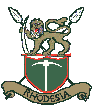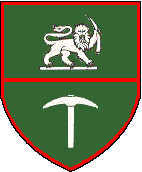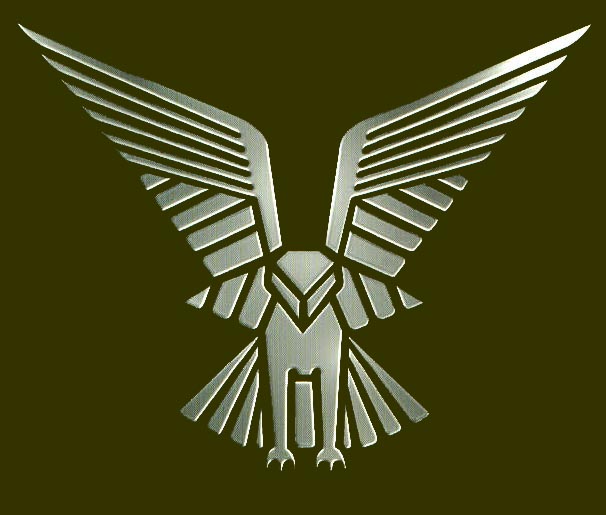|

| |
|
THE
RHODESIAN SECURITY FORCES
|
|
THE RHODESIAN SECURITY FORCES STRUCTURE CHART

|
|
THE
RHODESIAN ARMY
The Rhodesian Army’s command structure and organization were modeled
directly on the British Army. A Lieutenant-General commanded the Army
and was responsible to the Minister of Defense. Later in the conflict,
when COMOPS (a combined operations organization) was created, its
commander exercised operational control over the Army as well as
independently commanding the Army’s special forces. As Rhodesia had
very limited white manpower upon which to draw for professional military
service, a large part of the Army consisted of national service and
reserve personnel. Initially, all regular combat units were staffed with
full-time career soldiers, but after 1972, when national service was
increased from 18 to 24 months, inductees were drafted into some of the
Army’s special forces. In addition, many foreign volunteers, mostly
from South Africa but also from Britain, the United States, France,
Australia, and New Zealand, served in the Rhodesian military.
|
|
THE RHODESIAN ARMY SPECIAL FORCES
Rhodesian African Rifles
The Rhodesian African Rifles’ (RAR) two
battalions were composed of black soldiers led by white officers. The
black soldiers’ knowledge of tribal cultures, ability to speak various
tribal languages, and bush skills enabled them to obtain local
intelligence that the average white soldier could not hope to acquire
and function better in Rhodesia’s harsh climate and terrain than the
average urban-born and raised white trooper. Although the RAR first
proved themselves capable soldiers fighting with the British in Malaya
more than a decade before, their initial performance in Rhodesia was
poor, giving them a bad reputation among other Army units. Improved
training, however, raised the
RAR’s performance, and by the end of the war many RAR personnel were
participating in elite force operations, such as the various “Fireforces.”
Rhodesian
Light Infantry (Commando)
The
Rhodesian Light Infantry (RLI) was originally conceived as a light
infantry unit but later changed its tactical mission and structure to a
commando organization as it became more actively involved in the
counterinsurgency campaign. The battalion was made up of four commando
units of about 90 men each. They were trained as paratroopers and
provided the backbone of the “Fireforces.” The RLI also participated
in most of the major external operations and cross-border raids. Because
of their proficiency, they were classified as “Special Forces” and,
after 1977, came under the control of COMOPS.
Special
Air Services (SAS)
The
SAS was modeled on the elite British unit of the same name and fought
beside the British in Malaya during the 1950s. During the early stages
of the Rhodesian counterinsurgency campaign, the SAS was employed mainly
in tracking insurgents. Later, the unit was expanded into a regiment
comprising A, B, C, and D squadrons and for the remainder of the
conflict was employed in clandestine external operations. Volunteers
from various units were rigorously tested for mental and physical
stamina before being accepted by the SAS and then were extensively
trained in parachuting, canoeing, bushcraft, explosives techniques, and
other special tasks. The unit maintained a high standard of efficiency
and achieved a very high rate of operational success.
Selous
Scouts
The Selous Scouts were formed at the beginning of
Operation Hurricane in 1973 and tasked with obtaining intelligence on
the size and movement of insurgent groups. Like the SAS, most Selous
Scout personnel were volunteers who had undergone a stringent selection
course before being trained in parachuting, insurgent tactics, bush
survival, and weaponry. Surrendered or captured insurgents whom the
Rhodesians had “turned” were also included in the unit. Their
inclusion was critical because the information these recent defectors
provided kept the unit current on insurgent tactics and operating
procedures. Because of their success, the Selous Scouts doubled in size
over the course
of the conflict, and eventually some 420 members were deployed on active
service. Their role was similarly expanded to include
external operations, and they became responsible for training and
administering the combat tracking units in addition to their
“pseudo” operations role.
Greys
Scouts
The Greys Scouts were a mounted unit trained
specifically for tracking on horseback. They could thus cover more
ground than trackers on foot and could more easily escape insurgent
ambushes. Personnel were recruited from the regular Army and trained in
equitation. The unit was also used for patrolling and occasionally on
cross-border raids. Because it was classified as special forces, it was
also under the control of COMOPS after 1977.
|
|
THE BRITISH SOUTH AFRICA POLICE (BSAP)
The BSAP was Rhodesia’s national police force
and was responsible for maintaining law and order throughout the
country. Although it was modeled on the British police system, the BSAP
was more like the Royal Canadian Mounted Police in its development,
structure, and organization. It was commanded by a Commissioner of
Police who, in turn, was responsible to (and appointed by) the Minister
of Justice (later, Minister of Justice and Law and Order). The BSAP was
organized into branches, the most important of which were the Duty
Uniform Branch, Criminal Investigation Department, Special Branch, Support
Unit, and Police Reserve.
|
|
THE RHODESIAN AIR FORCE (RhAF)
The Rhodesian Air Force command and rank
structure was based on the British Royal Air Force. It was commanded by
an Air Marshal
who, like his counterpart in the Army, was accountable to the Minister
of Defense. The RhAF was never a large air force. In 1965, it consisted
of only 1,200 regular personnel. At the peak of its strength during the
insurgency, it had a maximum of 2,300 personnel of all races; but of
these, only 150 were pilots actively involved in combat operations.
These pilots, however, were able to fly all of the aircraft in the Air
Force inventory, which gave the RhAF a considerable amount of
flexibility. Pilots were rotated through the various squadrons partly to
maintain their skills on all aircraft and partly to relieve fellow
pilots flying more dangerous sorties.
|
|
THE
DEPARTMENT OF INTERNAL AFFAIRS
The
Department of Internal Affairs (IAD) personnel were the acknowledged
experts on tribal culture and mores and therefore played a prominent
role in the conflict. IAD officers served at the Joint Operational
Centers and were heavily involved in implementing such civic measures as
the protected villages program. The paramilitary “Guard Force,”
which was responsible for the security of the protected villages, also
came under IAD control.
White Internal Affairs personnel received
extensive training in African tribal law and customs and were required
to speak at least one of the tribal languages. Despite this, it is
evident that many of the senior officers failed to fully appreciate the
black population’s nationalist political aspirations. This became
clear when IAD assessments of black political opinion were at odds with
Special Branch’s assessment. Unfortunately, though IAD was wrong in
several of these cases, IAD senior personnel had the government’s ear
and LAD assessments were generally accepted over those of Special
Branch.
|
| |
|




